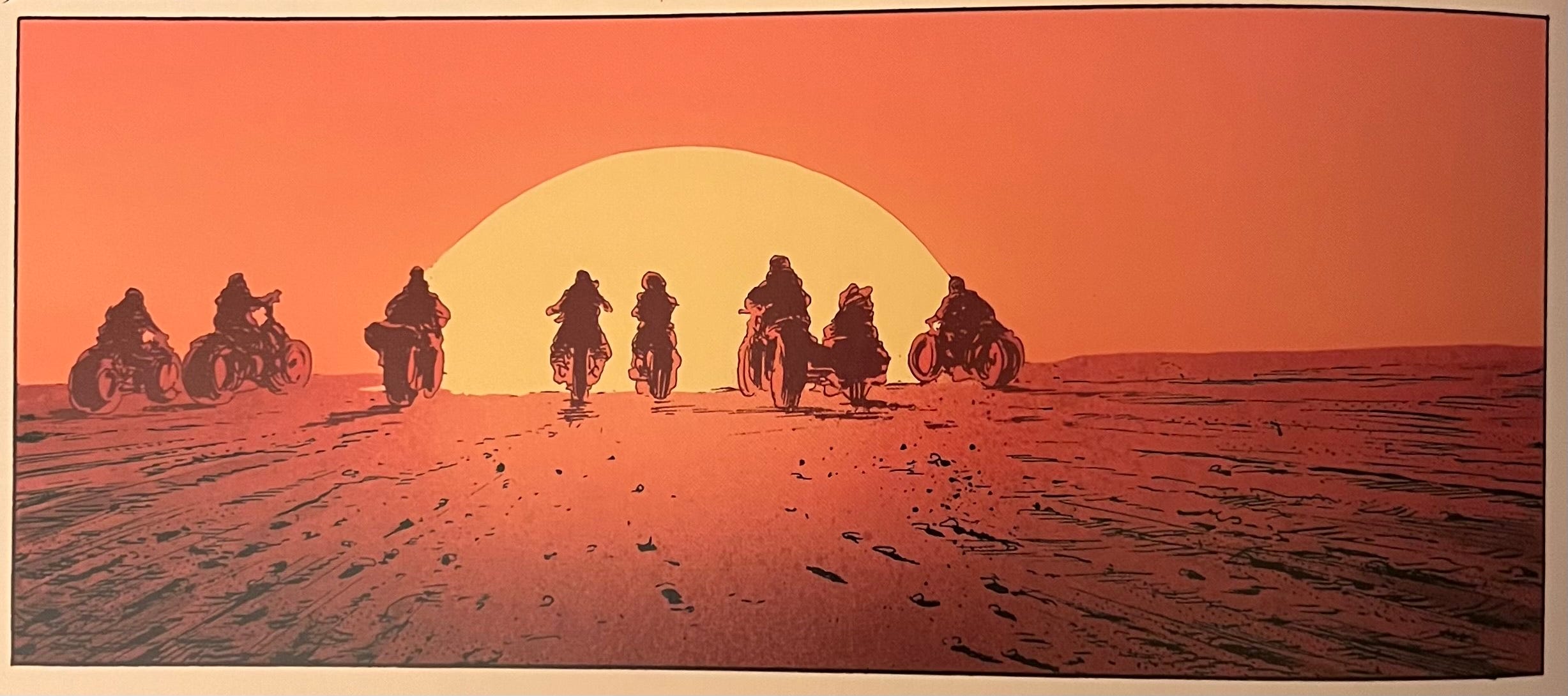Kali
Mihi vindictam ego retribuam
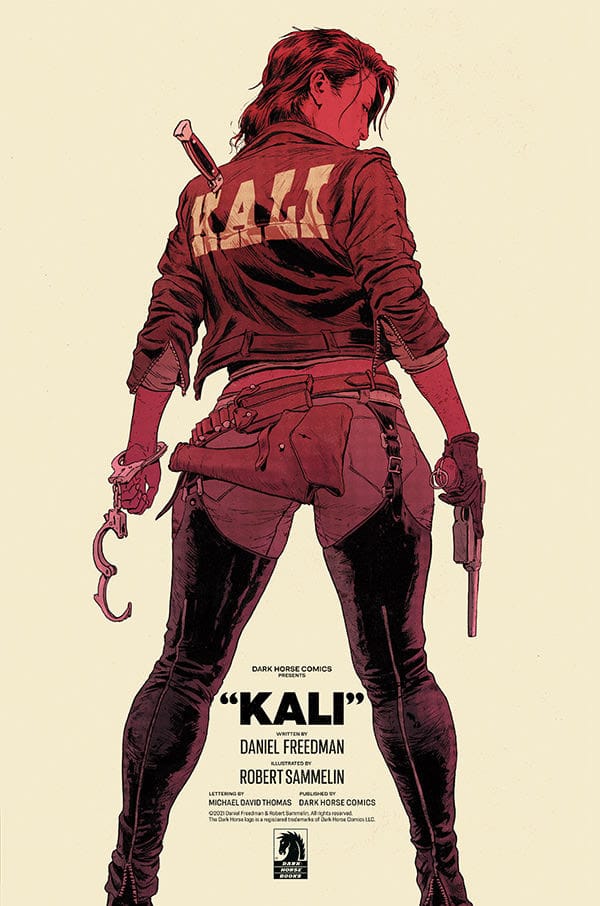
Stabbed in the back, slowly dying from poison, and left for dead by her own outlaw biker gang; Kali sets off on a road of vengeance across the war-torn desert. With death coursing through her veins and a fascist army on her trail, she will have her revenge, even if it kills her.
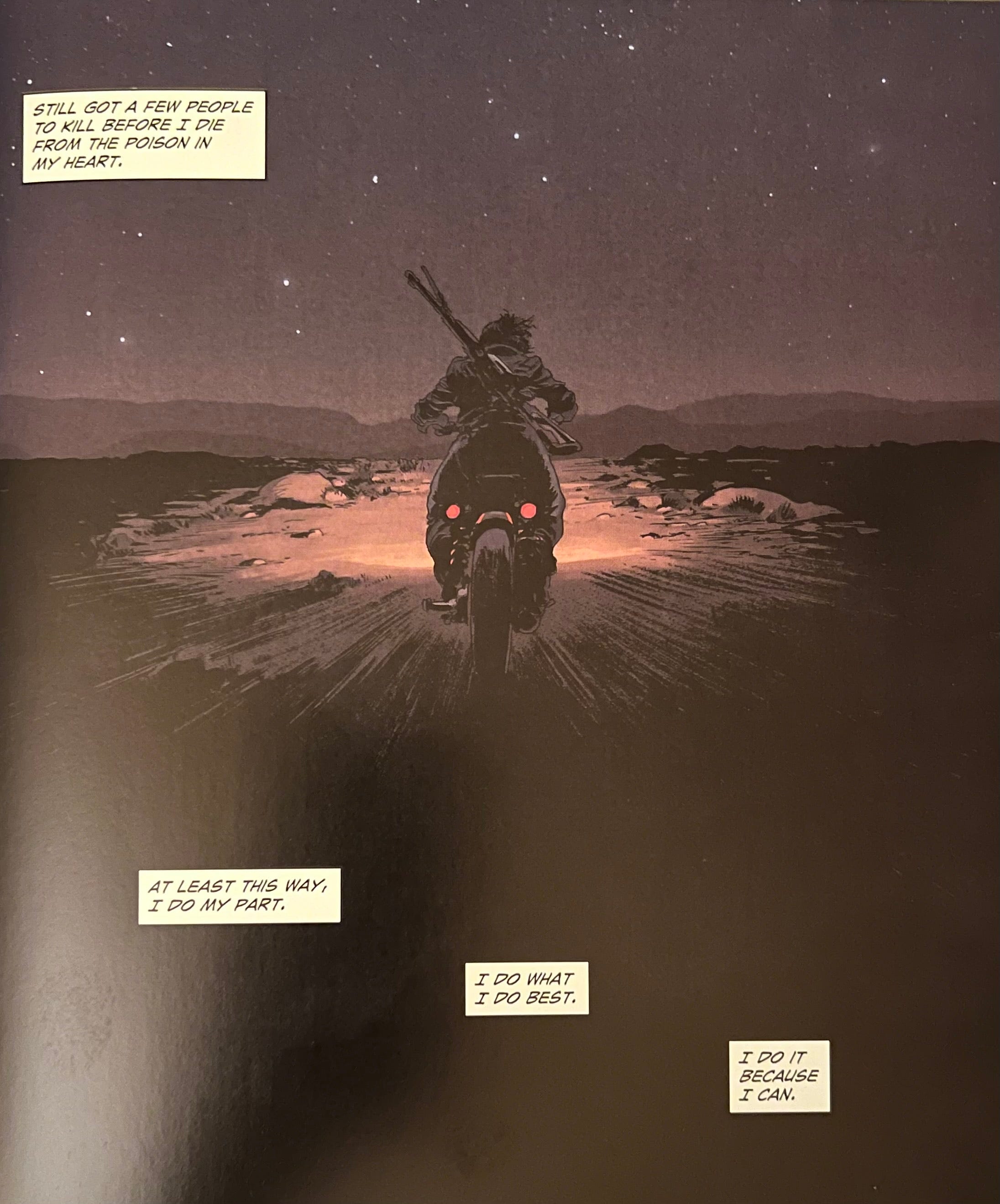
Kali is an original graphic novel—that’s what pretentious nerds with inferiority complexes call comic books—that claims to be a “nonstop high-octane existential action spectacle” but I think that’s mostly self-applied. Written by Daniel Freeman (BURN THE ORPHANAGE, UNDYING LOVE), illustrated by Robert Sammelin (PLANET OF THE APES/GREEN LANTERN, WARLORDS OF APPALACHIA), and Lettered by Michael David Thomas (B.A.B.E. FORCE JURASSIC TRAILER PARK, CITY OF OTHERS), Kali was published by Dark Horse Comics in 2022.
Obviously the comic draws a lot of inspiration for its visuals from old exploitation films like Ilsa She Wolf of the SS and Faster, Pussycat! Kill! Kill! There’s a bit of The Roadwarrior in there too, or maybe you would say that it’s Fury Road, depending on the generational point of view, I guess. Set in the possibly post-apocalyptic desert of an alternate world that leans heavily on the look and feel of the Nazi occupation of North Africa, Kali tells a classic story of revenge laid out over top a story about the dangers of fascism, and how even a futile resistance is better than submission when the difference between dying on your feet or living on your knees is only measured in how quickly or slowly you die.
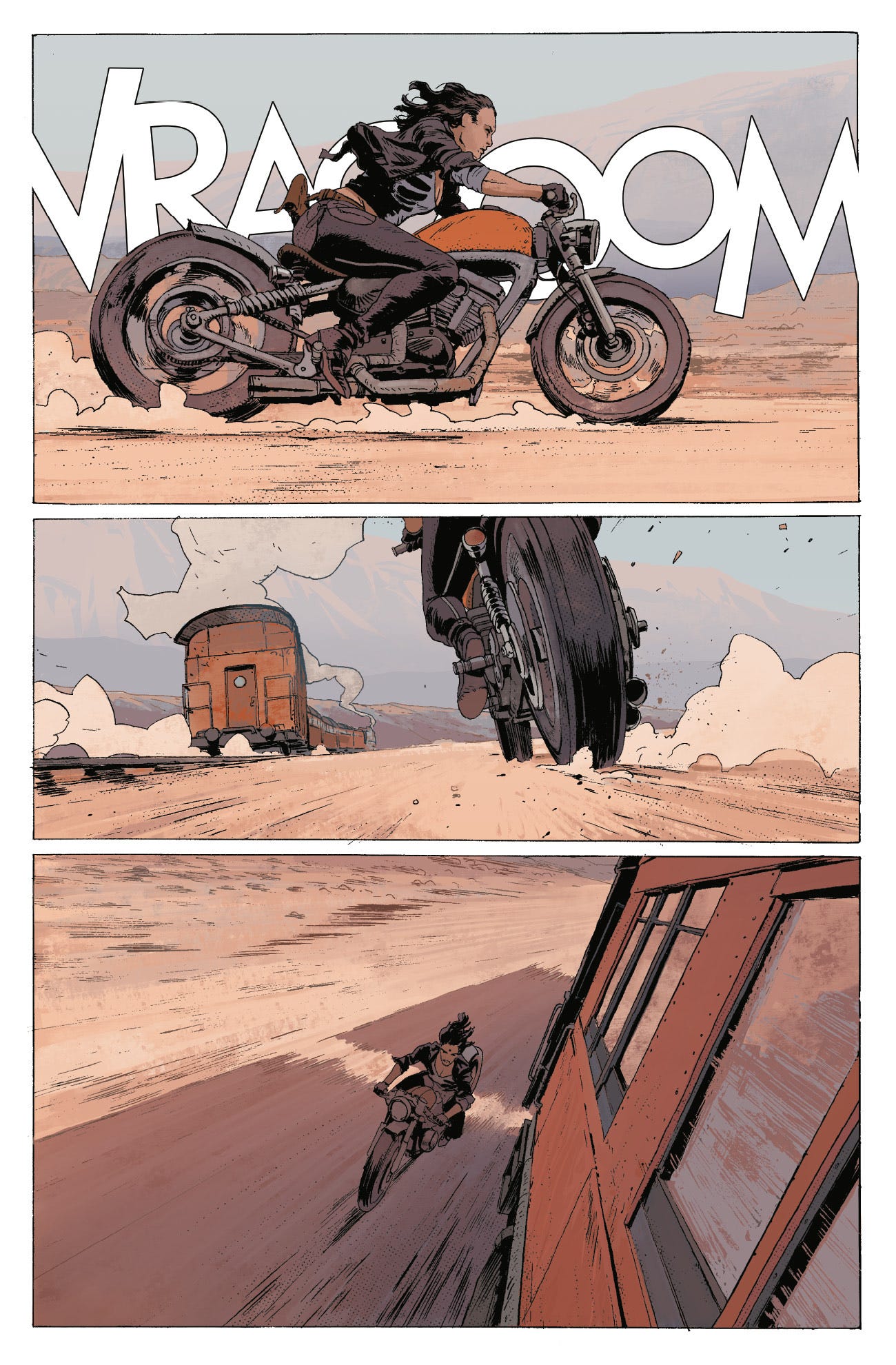
The art is fantastic.
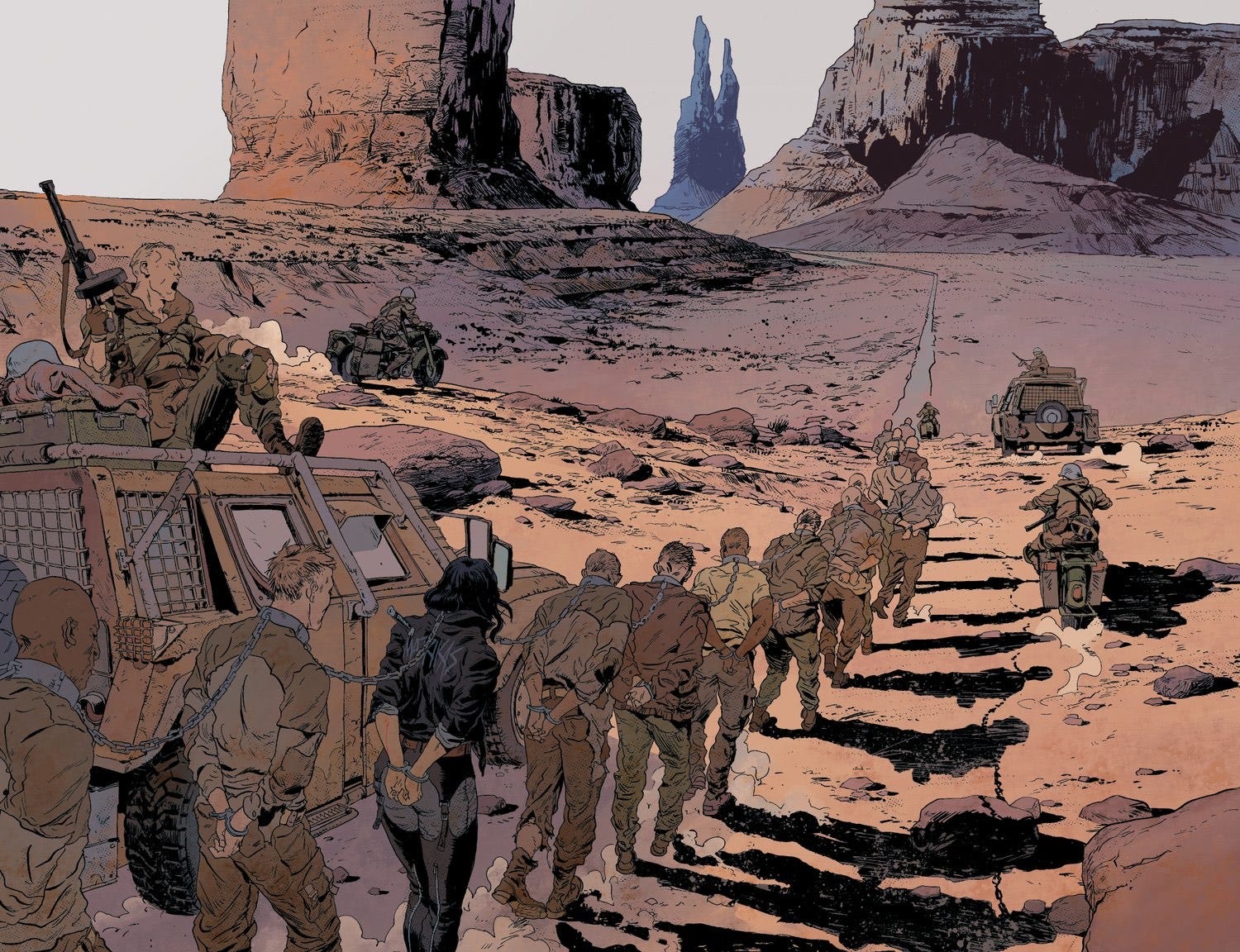
Fantastic.
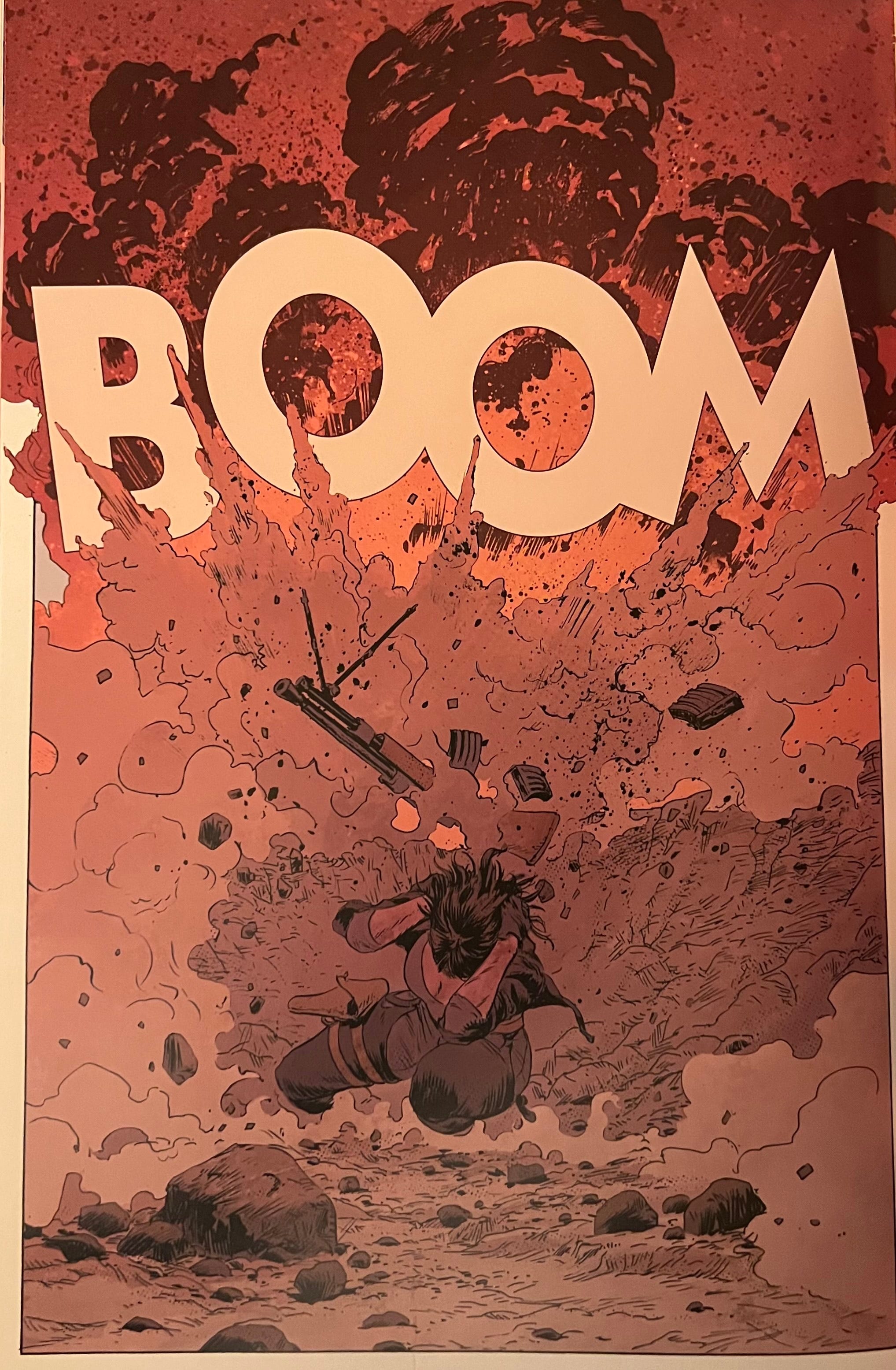
The dialogue leaves a bit to be desired.
Like all stories where the main character has been betrayed by people they once thought of as their friends, and was then left for dead, setting them on a trail of bloody vengeance, it starts with the main character clawing their way out of their grave, sometimes literally, sometimes figuratively…
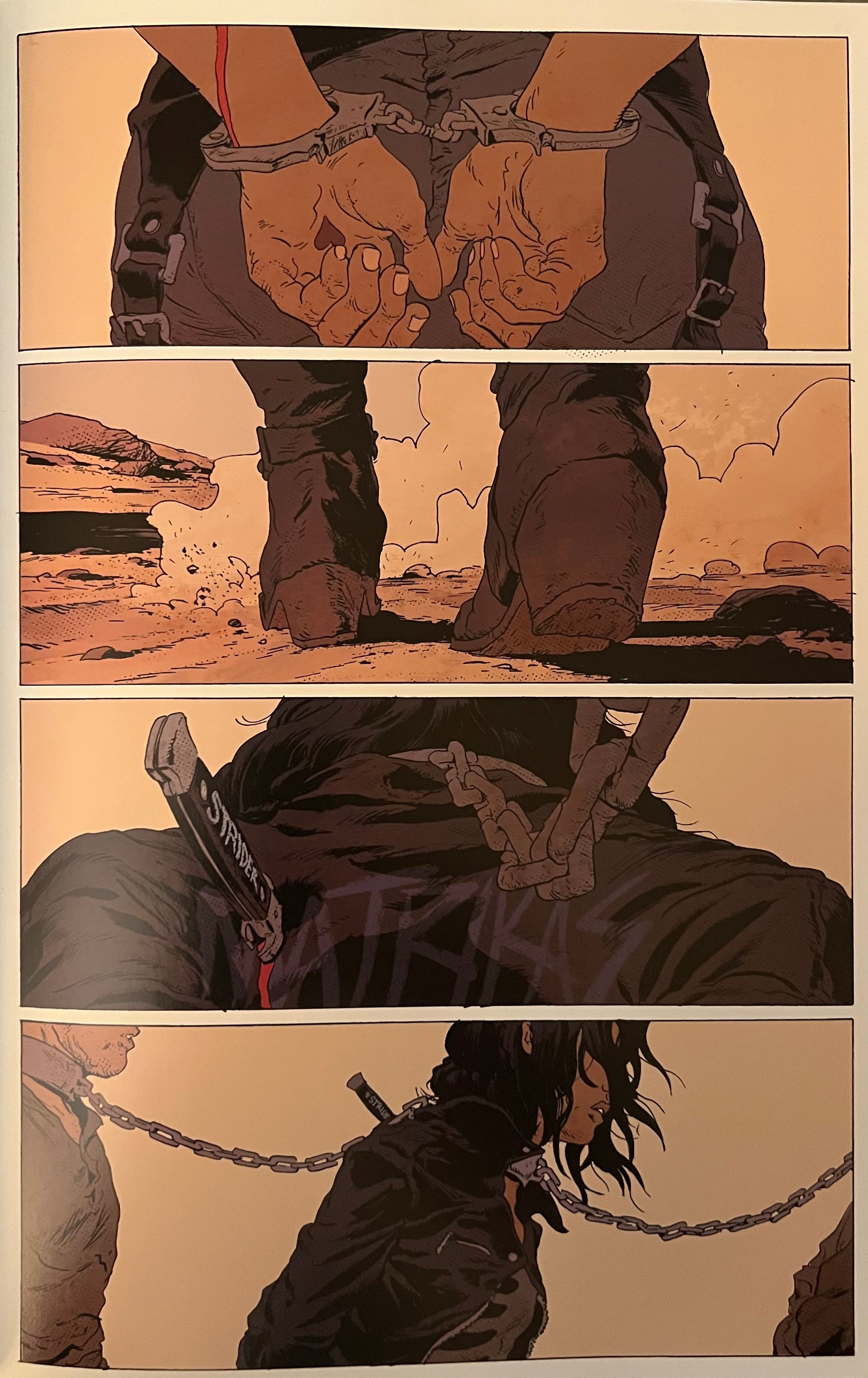
The main character is named Kali, and she is the former head of a small outlaw biker gang known as the Martrikas, whose world has been taken over by an army of Fascists known as The Machine after a long war. It’s unclear what the world looks like beyond the desert that this story is set in, or if Kali and the Martrikas were actual rebels before the story began, or just outlaws in general, but the catalyst of the story is that the Machine has been wiping out both rebel factions and outlaw bikers alike, and as word filters back to the Martrikas that their fellow outlaw biker gangs—The Red Death, The Lovers, The Deceitful Poets—are all dead, the result of the world having been beaten into submission by The Machine, and made into a place for believers, conformists, and slaves, the Martrikas realize that they are the last group standing, and are faced with a final, irrevocable decision…
Stand and die. Kneel and submit.
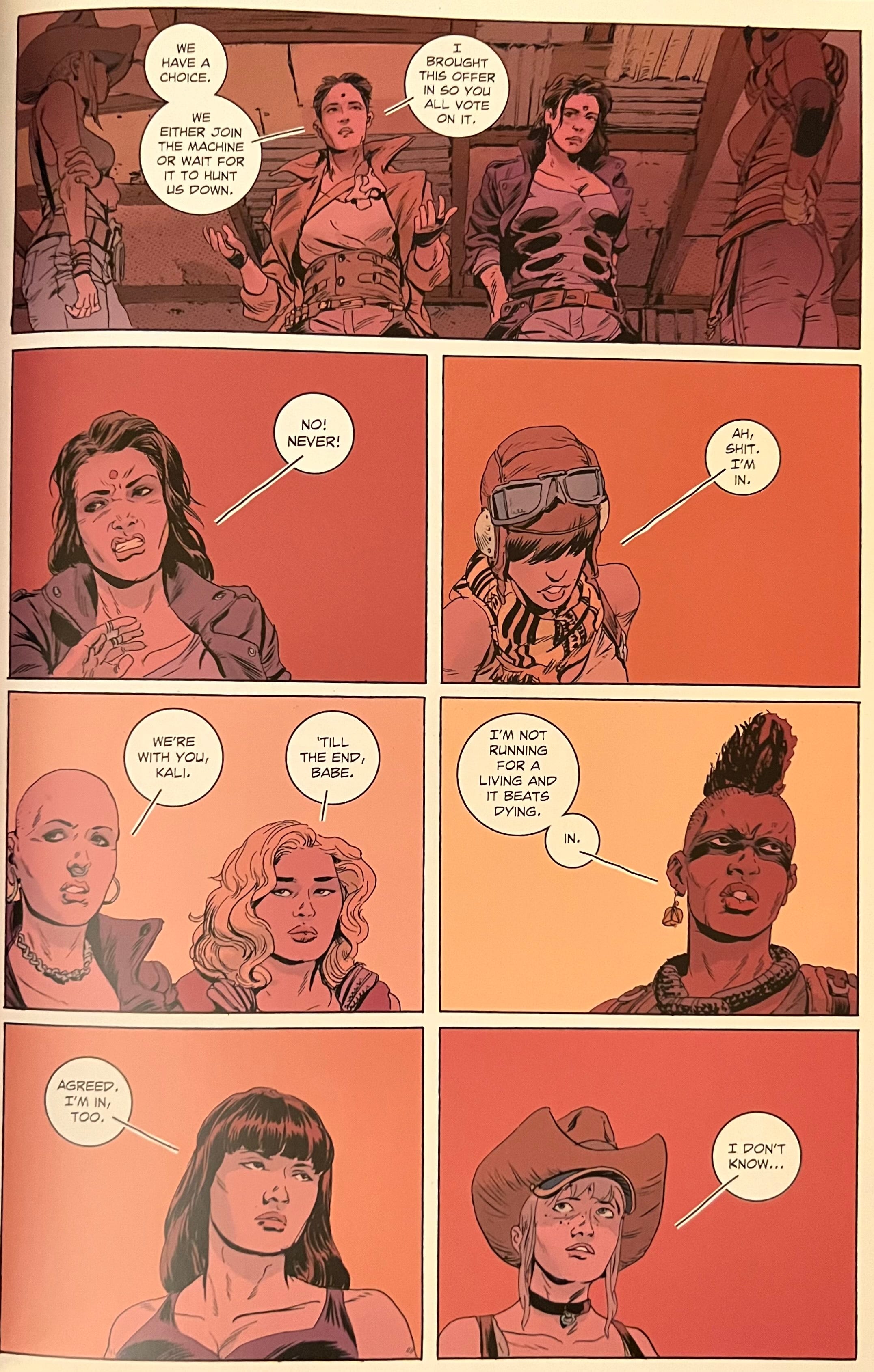
The vote doesn’t got Kali’s way, things get bloody as a result, and even though the friends who stood with her didn’t make it, she manages to survive the betrayal, and now she’s looking for a little payback.
That’s the whole book. Classic stuff.
This is a self-contained story, so it’s okay that it’s unclear what the rest of the world is like beyond the borders of this war-torn desert, or if there even is a “beyond” the desert at all. What’s less forgivable is that it is also unclear what the main character’s connection to the Hindu goddess Kali is, or if there’s one at all. The story seems to imply there is some and there are definitely a few visual clues, but other than that... I’m not seeing anything.
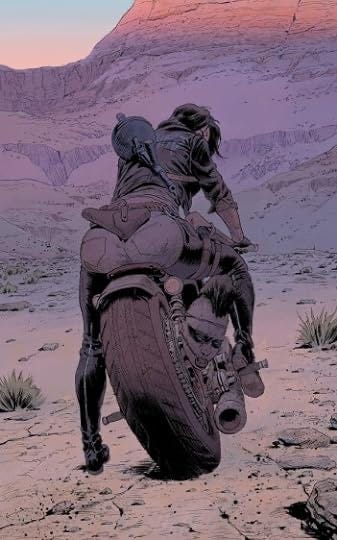
Obviously, there’s the severed head thing, right?
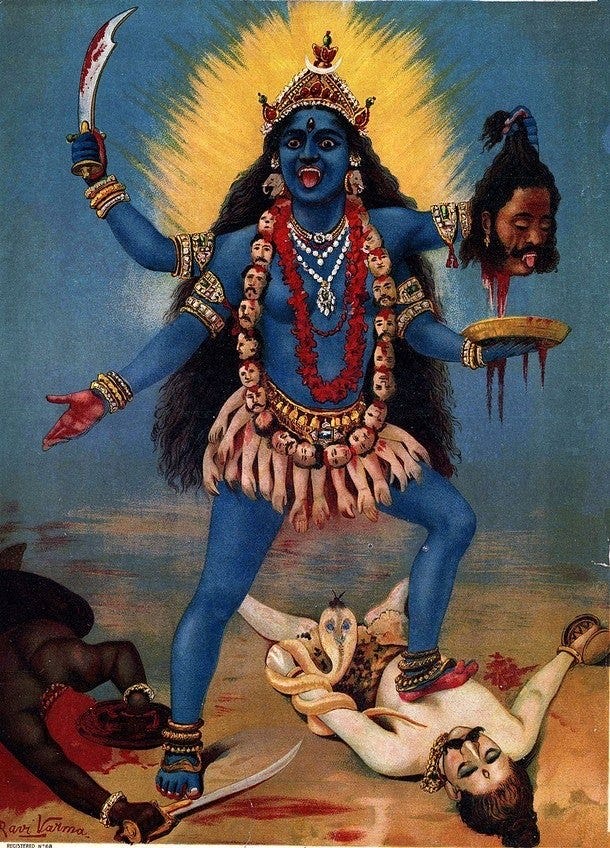
Now normally, a name can just be a name, this isn’t an uncommon thing. “It just sounds cool” is half the reason to do some of these things.
The problem is, the book puts enough effort into implying that there’s some deeper meaning going on here that it goes beyond feeling like “because it’s cool” was the reason. For instance, the name Martrikas is a reference to the group of Hindu Mother Goddesses, who are always depicted together in Hinduism, of the same name. Those goddessess are often depicted in a group of seven, called the Saptamatrika, meaning “Seven Mothers.” However, they are also depicted as a group of eight goddesses, called the Ashtamatrika, which I assume means “Eight Mothers.” Being that there are eight women in the Martrikas outlaw biker gang, it isn’t unreasonable to assume that they all supposed to match up somehow, but after a bit of googling, it’s not immediately apparent to me as to how. It doesn’t seem like they’re all linked by name, which seems like the obvious answer, but still, it’s strongly implied both with the specificity of the characters’ individual designs, and how each feels like they have a unique specialty within the group that there is a link somehow, BUT… some of the characters have such small roles in the story, it’s hard to say whether or not their personalities actually reflect any aspects of the various goddesses. So, unless the plot points of this story is a twisted adaptation of a Hindu legend that I’m not aware—which is definitely possible—it doesn’t seem like the references here are anything other than the most shallow of applications. If that’s true, and being that it’s a comic by White guys… that could be seen as kind of shitty.
But… maybe that fits with the whole exploitation angle somehow…?
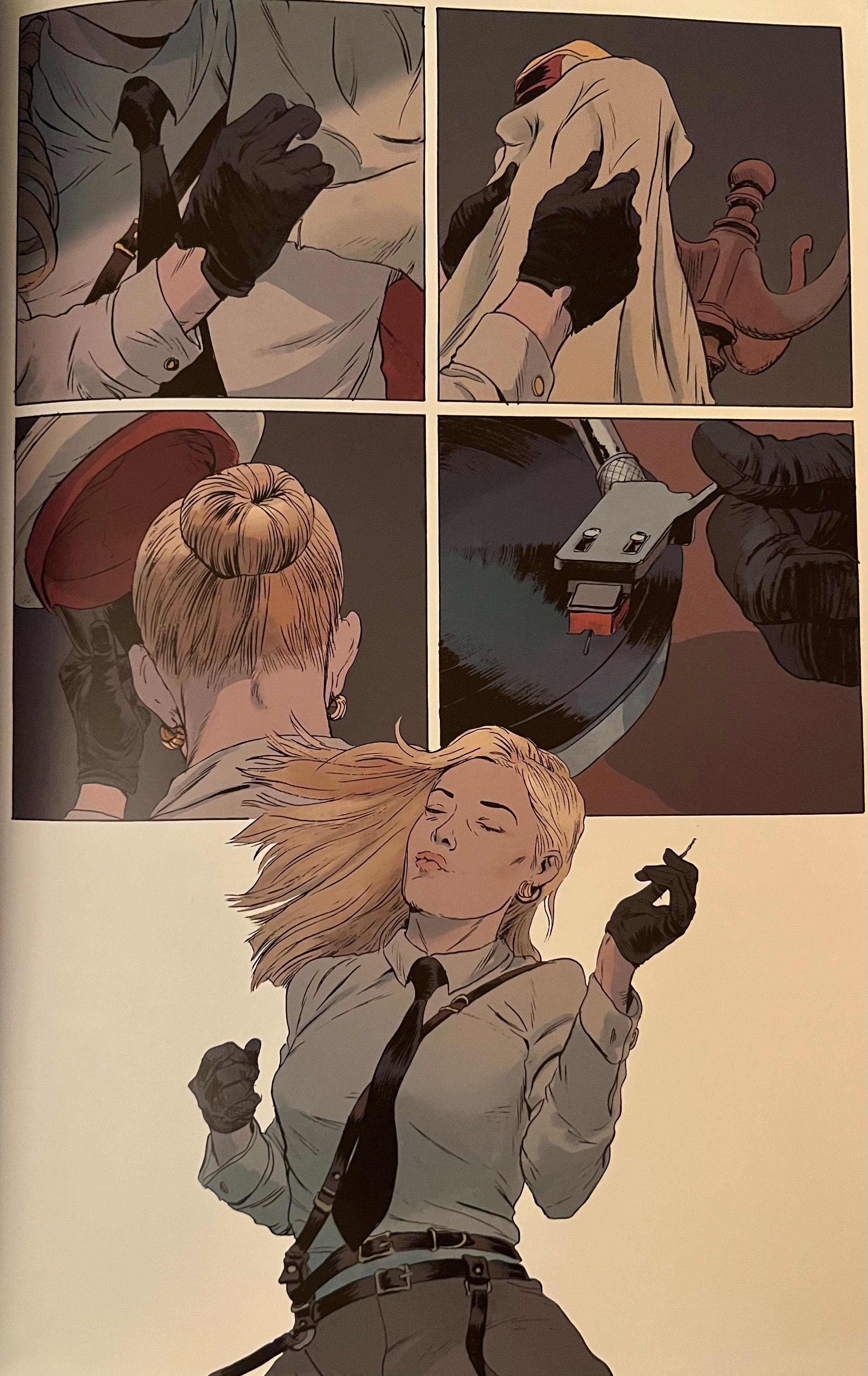
Exploitation films are a type of cinema, often cheaply produced, that are designed to create a fast profit by referring to, or exploiting, contemporary-at-the-time cultural anxieties. Things like drug use, nudity, stripteases, sexual deviance, rebellious youths or gangs, violence in society, or xenophobia, the fear of terrorism or alien invasions even, just for example. Ostensibly, exploitation films claim to warn viewers about the consequences of these problems, but they’re really mostly more about the titillation, glamorization, and celebration than they are any kind of real critique. I don’t know… Who can say? Like I said, it’s unclear.
All I know for sure is, I liked the brief cameo of the Haunted Tank crew.
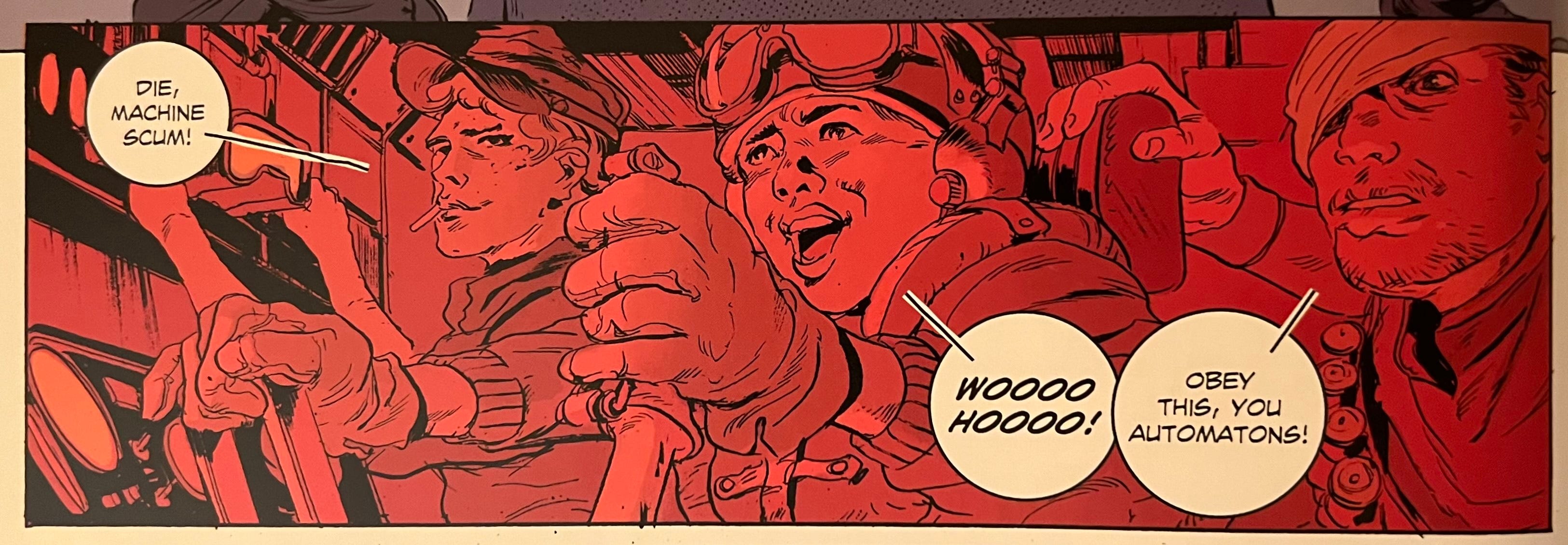
In the end, Kali looks great, but it’s more than a little ham-handed, and the dialogue is rough. That having been said, I did appreciate the wild and free romance of it all.
